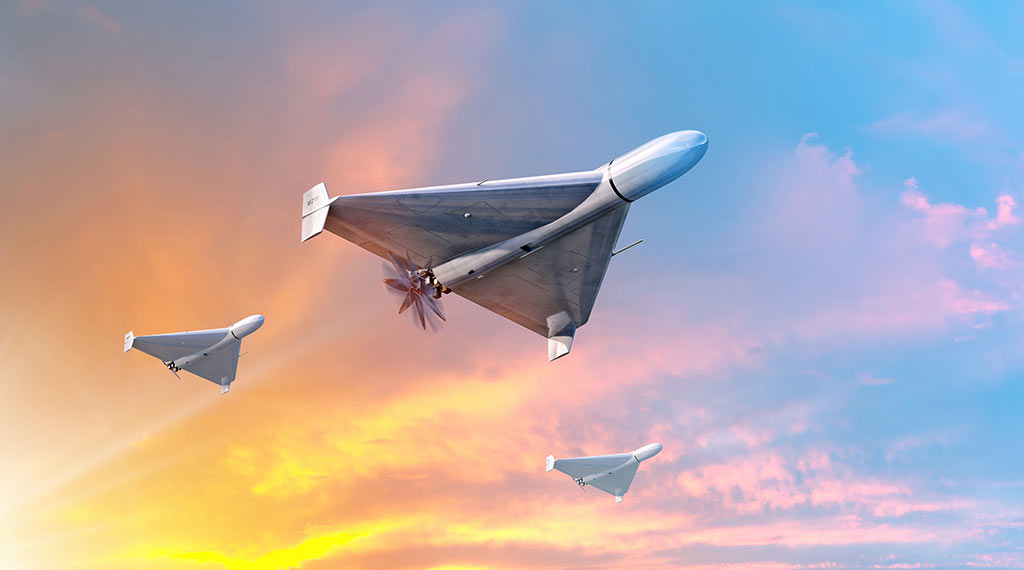
Drones have dominated the skies over Ukraine since the onset of Russia’s invasion nearly nine months ago. Despite many compound losses, the Russian Air Force’s unmanned aerial vehicle complement has tripled with the help of Iran. Since mid-summer, Tehran has supplied its rogue ally with various advanced lethal drones – specifically, with explosive-laden kamikaze UAVs like the Shahed-136 loitering munition.
In addition to providing a more lethal edge than Russia’s domestically produced drones, this sophisticated UAV has singlehandedly enhanced Moscow’s long-range strike capability in the conflict. Overall, the use of Iran’s Shahed-136 explosive-laden drone has proved to be a significant asset for Russia’s armed forces.
What Makes the Shahed-136 Special?
Developed by Iran’s Aircraft Manufacturing Industrial Company, the Shahed-136 was publicly revealed in December 2021. Similar to its smaller version, the Shahed-131, the drone is able to remain airborne and loiter prior to striking its target. UAVs with this capability are often referred to as kamikaze or suicide drones. While they have been around for several decades, their use became widespread in the 2020 Nagorno-Karabakh conflict between Armenia and Azerbaijan.
The Shahed-136 is powered by the China-produced MD550 engine, which is believed to be largely derived from a German design. According to the Institute for Science and International Security, the drone is launched by a catapult system, or from pre-filled containers fired off the backs of vehicles using an ejectable rocket assist system. With a range of a few thousand kilometers, the Shahed-136 can easily reach any target in Ukraine, making it a significant component of Russia’s war efforts.
While the Shahed-136 has allowed Russian forces to carry out long-range strikes against Ukrainian defenses and infrastructure, the drone is believed to be missing a camera. If this is the case, operators would probably incorporate other surveillance-capable UAVs, like the Mohajer-6, into Shahed-136 missions. The drones’ lack of external optics leave the weapon more vulnerable to electronic warfare techniques such as jamming that diminishthe UAV’s effectiveness.
The Shahed-136 in Ukraine
Although Iranian officials have consistently denied providing Russian forces with suicide drones like the Shahed-136, photographic evidencedepicting these loitering munitions in the conflict prove otherwise. Over the summer, the Biden administration revealed it had obtained satellite imagery showing Russian delegations visiting Iran’s Kashan airfield. Shortly thereafter, the Kremlin was believed to have procured at least hundreds of Iran’s advanced drones. Since August, reports have continuously indicated that Iran is training Russian forces to use its drones.
Last month, the General Staff of the Armed Forces of Ukraine said that, “According to preliminary information, the leadership of Iran and the Russian Federation agreed to send advisors and instructors to the territory of the Russian Federation for the use of impact BPLA.” This statement followed reports that Moscow had used Shahed-136 drones in the conflict. In a Sandboxx news report, Ukrainian Air Force spokesperson Yuri Inhat claimed that Ukrainian forces had shot down 85% of all Shahed-136 drones launched by Russia in the conflict so far. While that number may be exaggerated, the drone’s use in the invasion is undisputed among military analysts and industry experts.
Is the Shahed-136 truly a game changer for Moscow?
Moscow’s deployment of Shahed-136 loitering munitions has proven to pose a significant challenge to Ukraine’s defenses. In September, the chief executive of Red Six Solutions LLC told the Wall Street Journal that the presence of the Shahed-136 would undoubtedly alter the operational trajectory of Kyiv and its forces, adding that the drone “can be used in great effect with one targeting a radar system and the second one hitting artillery pieces.” Just a few weeks ago, the Shahed-136 – in conjunction with Russia’s cruise missiles – knocked out almost one-third of Ukraine’s power plants, leaving civilians in the dark and cold. Since this type of munition is so inexpensive, Moscow could deploy more of them to disrupt civilian life and infrastructure as the war progresses. While Moscow’s use of the Shahed-136 does not bode well for Kyiv, the loitering munition has not helped Russia confront Western-supplied rocket artillery, as some in the Kremlin initially hoped. Additionally, as Moscow continues to deploy this weapon in its war efforts, Ukrainian forces will become more adept at disabling it.
The most concerning aspect of Moscow’s use of the Shahed series in Ukraine is Tehran’s reach in the region. As the Kremlin and the Iranian regime continue to turn toward each other to support their rogue activities, Ukraine could be on the receiving end of more advanced Iran-made weaponry.
- US Stands Up New Drone Strike Force in the Middle East - December 9, 2025
- Has Russia Finally Sold its Su-35s to Iran? - December 2, 2025
- Iran’s Growing Missile Arsenal Is a Challenge for Israel - November 18, 2025
